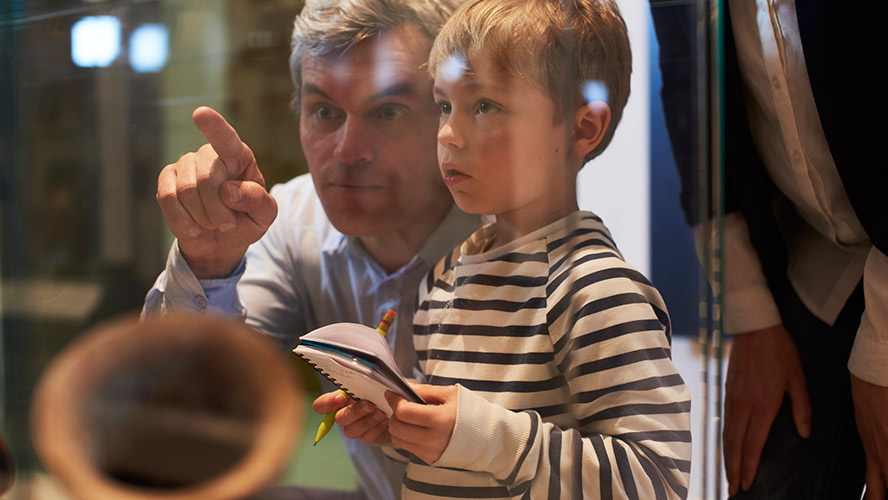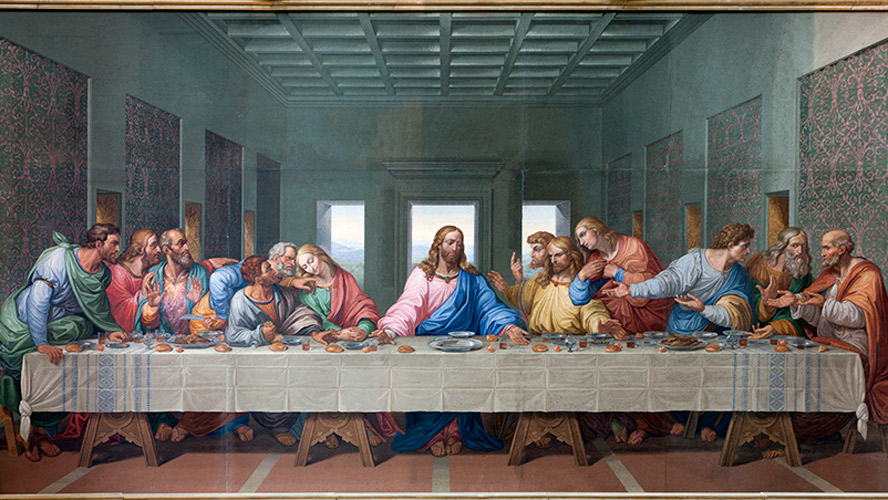Murcia is about its traditions and its Holy Week, especially the procession by the Confraternity of Jesus the Nazarene, which has been celebrated since 1600. When the river Segura, the waters that have marked life and death in the history of Murcia, flooded and destroyed many of its floats, the members decided to commission Francisco Salzillo, one of the main Baroque sculptors, to convert their faith once again into processional floats. The result is one of the most important Holy Weeks in Spain and a complete museum that brings together the work of the best Spanish 18th century image-maker who wanted to develop all his art in his native city, Murcia.
They say that even the Count of Floridablanca invited him to move to Madrid to open his workshop there and expand his art but Salzillo refused. His sculptures only had meaning and life in Murcia.
The museum’s history
Francisco Salzillo’s sculptures became increasingly popular in Murcia thanks to the halo of romanticism and legends that enveloped his religious work, which was deeply felt by its people full of faith. That is why, very soon after his death, in the 19th century, the idea of creating a museum arose, especially in view of the fervour with which the people stopped at the Church of Jesus where his Easter floats were kept by the Confraternity of Our Father Jesus, which has taken them out in procession in accordance with tradition since 1601.
Isidoro de la Cierva was the first person who, together with the Confraternity, fostered the creation of the museum and commissioned the first sketch of a building that was never carried out.
If that museum had been built, it would have been three times bigger than the present one and yet in the 1970s the Salzillo Museum was able to extend its grounds by adding the Renaissance façade of Riquelme Palace on Jabonerías Street.
The building you now see has been transformed with the restoration of the floats in the 1990s and the recreation of the Church of Jesus as if it were a theatre, so that you can see the grandeur of the floats from the balconies.
Today it is one of the most visited places in Murcia by those

Collections that can be visited and outstanding works of art
The museum exhibits the floats of the Confraternity of Our Father Jesus which have been taken out in procession on Good Friday mornings since the 17th century. One of the most outstanding is The Supper, sculpted in 1763, which consists of the thirteen figures that are the protagonists of this processional scene. Also to be enjoyed are The Prayer in the Garden from 1754, with the three apostles sleeping under the palm tree; and The Arrest, or as it is popularly known, The Kiss of Judas, from 1763, which achieves a perfect contrast between good and evil with the ugliness of Judas and the beautiful face of Jesus.

Very impressive is the face of Jesus on the column, or The Scourging, as it is also known in Murcia, from 1777; and The Fall, from 1752, made up of five figures.
Next to the Saint John float, there are two floats featuring women, Saint Veronica and Our Lady of Sorrows, created in the same year, 1755.
Accompanying those processional floats, the Salzillo Museum exhibits the only Holy Week float that was not created by him: Our Father Jesus the Nazarene, a float from 1601, when the tradition of this procession began and which gives its name to the confraternity.
The Passion of Christ is not the only religious work by Salzillo that can be enjoyed at the museum: there is a Nativity scene that was started by the Murcian sculptor and continued by his disciple Roque López. It has 556 clay figures of about 30 centimetres.
It is not the only Nativity scene you can marvel at during your visit; another one, in Neapolitan style, was put together by the brothers Emilio and Carmelo García de Castro and has been on display there since 2014.
Information for visitors
Visiting the museum can take just over one hour, depending on how detailed you want to make it. It opens every day from 10 a.m. to 5 p.m. and on Sundays and bank holidays from 11 a.m. to 2 p.m.
In addition, two guided tours for groups of no more than 15 people are organised every day from Monday to Saturday at 12 p.m. and 4 p.m.
Admission is five euros, although there are reduced tickets for three euros for special groups.

Where to stay in Murcia
Murcia has a variety of accommodation options but the four-star Occidental Murcia Siete Coronas is perfect if you want to experience the city, its day-to-day and nightlife, and its museums. From the hotel, the Salzillo Museum is within a nice walk along the river bank and the centre since the fully renovated Occidental is located on Paseo de Garay.
Its 156 rooms are modern and full of light and many of them have views of the city, guaranteeing a pleasant stay together with the best service.
The hotel also has an amazing Bistro restaurant with terrace, gym and nine multifunctional rooms equipped with the latest technology. Parking is available on site and pets are welcome.
It is the ideal place to take in the essence of a city that embraces the best culture and latest trends without leaving aside the tradition and craftsmanship learned along the way.
Además, el hotel dispone de un increíble restaurante Bistro con terraza, gimnasio y nueve salas multifunción equipadas con la última tecnología. También ofrece aparcamiento y se aceptan mascotas.
Es el lugar ideal para apropiarse de la esencia de una ciudad que abraza la mejor cultura y vanguardia sin dejar de lado la tradición y oficio aprendidos por el camino.










































































